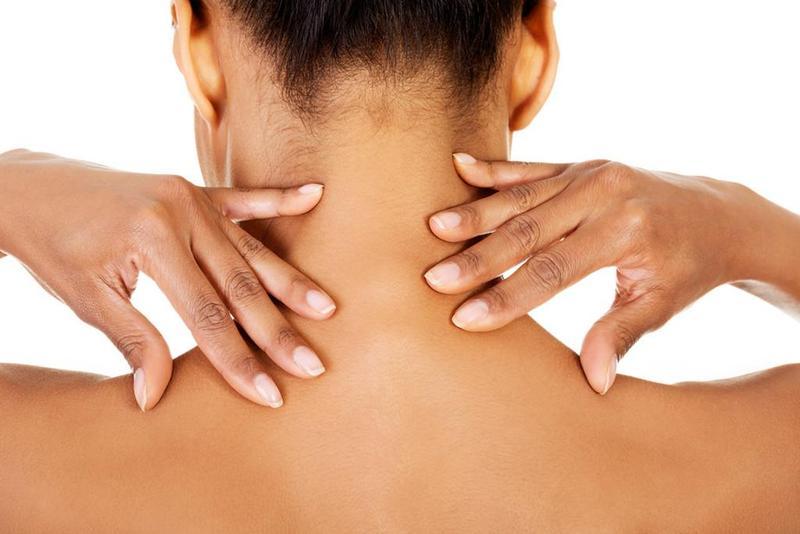10 Reasons You Should Try Self-Massage
10 Reasons You Should Try Self-Massage
Want to rub Melissa Swanson the wrong way? Just say “massage.” “The word automatically makes me think of pain,” says the 46-year-old of Richmond, Wisconsin, who has fibromyalgia and 20 associated syndromes she calls “evil sidekicks.” But say “self-massage” and Swanson – a fibromyalgia advisor and blogger – thinks of relief. “It has always helped, no matter what level I’m in,” she says. Even people without chronic pain can benefit from the practice. Here are 10 reasons to try it today:
1. It’s easy.
If you have hands, you can massage yourself. Heck, even if you don’t have hands, you can practice self-massage by, for example, placing a tennis ball between your shoulder blades and rolling up and down against a wall. “As long as exert moderate pressure and move the skin, they will get positive effects,” says Tiffany Field, director of the Miami School of Medicine’s Touch Research Institute, who recommends self-massaging daily.
2. You’re already a pro.
Self-massage is so easy, in fact, that you’re probably already doing it. If you’ve ever rubbed your temples to ease a headache, squeezed the skin on the back of your neck to relieve tension, stretched, practiced yoga, gone for a swim or used a loofah in the shower, you’ve done some form of self-massage, Field says. Massage cushions, foam rollers and other tools count too.
3. You probably need it.
Just like your ears, eyes, tongue and nose need stimuli to hear, see, taste and smell, your skin needs to be touched. And chances are, it’s not being touched enough in our increasingly physical contact-deprived society. When you self-massage, you stimulate the pressure receptors under the skin, which boosts the activity of a major nerve called the vagus, Field says. In turn, you’re more relaxed, less stressed and even less likely to get sick. “Self-massage is really critical,” she says, “and it’s the only alternative if you don’t have someone else to do it.”
4. It’s cheap.
While an hour rubdown from a massage therapist can set you back more than $100, self-massage doesn’t have to cost a penny. Even if you purchase a tool like a neck and shoulder massager (which can run around $100), a wooden massage wheel (usually less than $20) or a foam roller (close to $20), the one-time investment will cover countless sessions. Even most athletes are trained in self-massage techniques “because they can’t afford every day to have a massage,” says Mindy Caplan, a personal trainer and yoga instructor in Albuquerque, New Mexico.
5. It’s convenient.
Self-massage doesn’t just save money – it also saves time. Try digging into your forearms with your thumbs and knuckles while riding the bus or dialing into a conference call. Caplan likes to use her foam roller during hourlong TV shows. But don’t worry if you don’t have that much time. “You got five minutes? Use it for five minutes,” Caplan says. “Don’t say, ‘Well, I only have five minutes’ because every little bit will help.”
6. It’s (relatively) safe.
Many massage therapists don’t feel comfortable talking about self-massage since recommendations vary by client, says Ron Precht, a spokesman for the American Massage Therapy Association. He suggests people first see a qualified massage therapist who can then recommend at-home techniques catered to their specific concerns, pain level, medical conditions and more. Caplan also suggests seeking guidance the first time or two you use a foam roller, which can leave you in the wrong kind of pain if you roll over a joint or bone. “For the most part, though,” she adds, “foam rolling is very safe and very effective.”
7. It will improve your workouts.
“For years, everybody said just said, ‘Work out – go, go, go,’ and nobody said, ‘stretch,’” Caplan says. While yoga’s growing popularity has helped shift that mentality, too few exercisers focus on relieving their muscles after working them, says Caplan, who explains the technique reduces soreness and your risk for injury by helping release lactic acid and repair muscle tissue. “If more people were to use foam rollers, at least they wouldn’t be so tight and bent over and have so many joint issues,” she says.
8. It can help treat some conditions.
As Swanson has found, self-massage is an important tool in her kit for coping with fibromyalgia. People with other pain conditions, such as carpal tunnel syndrome and arthritis, can benefit from the practice too, in part due to its ability to improve sleep (and in turn, immune function), Field says. Some studies even suggest self-massage can help relieve menstrual cramps, reduce smoking cravings, treat constipation and more. Bottom line: “It works,” Field says.
9. You’re in control.
Swanson used to love professional massages. But since being diagnosed with fibromyalgia six years ago, she can’t bear them. “It could be extremely painful the whole way through because … for , pain is so different, it’s amplified,” she says. Massaging herself (or directing a friend, family member or colleague to help) means nailing the part of the muscle that’s tense without overstimulating the skin on top.
10. It just feels good.
To reap the most benefits from a foam roller, use the hardest one you can stand, Caplan suggests. Warning: “When you’re rolling, it hurts,” she says, adding that your muscles may even feel bruised. But it’s worth it. “About two hours later, you really start to notice a huge difference in how you feel,” she says. That’s certainly been the case for Swanson, who self-massages a few times a week. “From not doing it to doing it,” she says, “it’s immensely lowered my pain.”
by Anna Medaris Miller For US News
Be the first to post a message!
